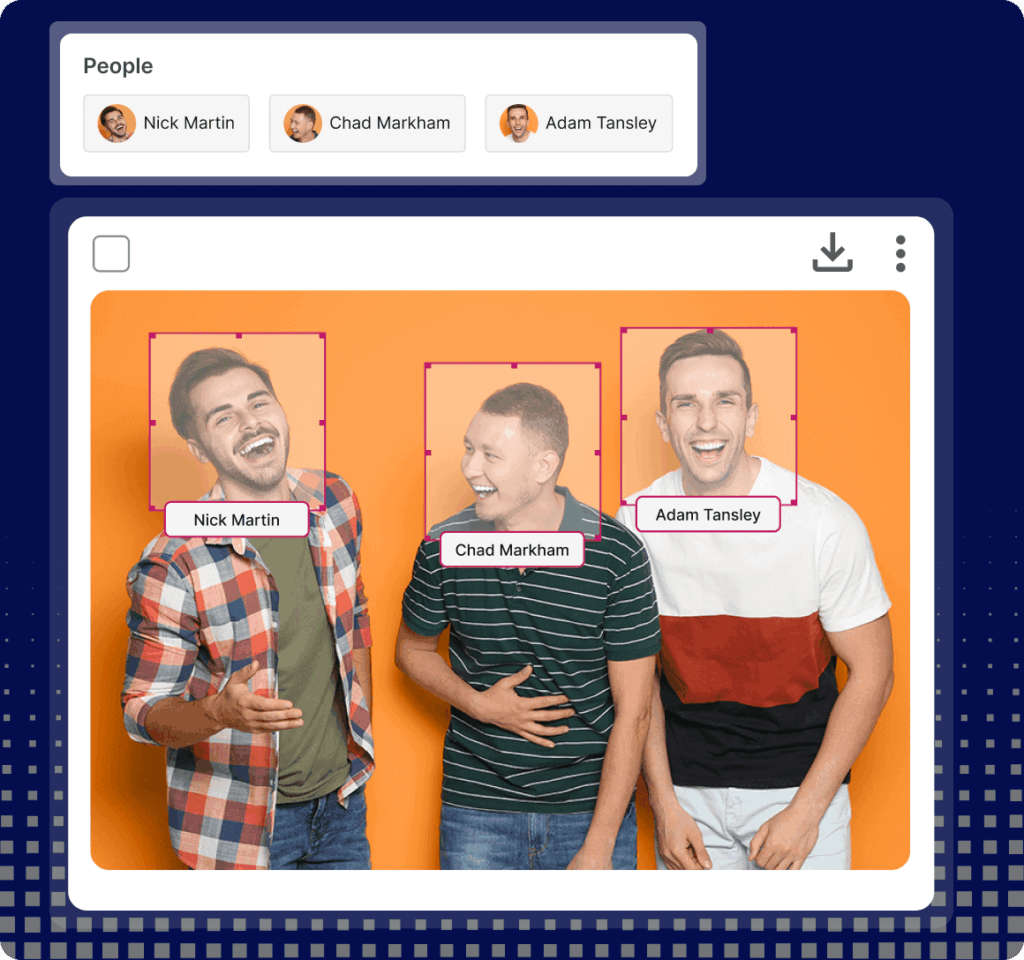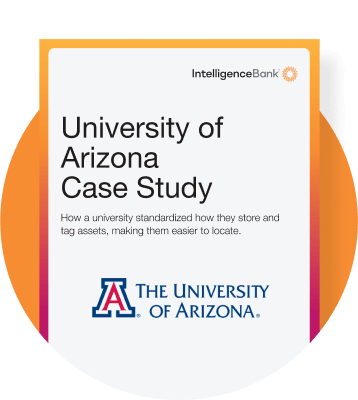Approval software is a digital tool designed to simplify and automate the approval process for a whole range of tasks, documents, and workflows within marketing departments, the wider organization and external partners. For reasons we’ll get into shortly, the need for streamlined and efficient marketing processes is more critical than ever. By providing a centralized platform for managing marketing approvals, this software helps eliminate bottlenecks, reduce errors, and enhances collaboration across teams. It puts an end to chasing and documenting approvals via email and Slack.
Whether it’s approving briefs, financial documents, project timelines or creative submissions, approval software ensures that all necessary stakeholders can review and approve items quickly and efficiently. This not only saves time but also ensures that all actions are compliant with organizational policies and standards.

What is a Marketing Approval Process?
A marketing approval process is a systematic series of steps designed to make sure that all strategies, budgets and creative materials are reviewed and authorized before being executed. This process is essential for maintaining brand consistency, compliance with regulatory standards, and the overall quality of marketing efforts. Today’s marketing content cycle runs at warp speed and having an efficient approval process helps avoid costly mistakes. It ensures that every piece of content aligns with the brief’s objectives and brand values.
The marketing approval process typically begins with the creation of a marketing brief for an asset, such as a stand alone ad, social media post, piece of collateral or a coordinated campaign with several assets. Once a brief is created, it is submitted for review. Once approved assets are submitted for review. Key stakeholders, including marketing managers, legal teams, and brand guardians, then evaluate the content for accuracy, adherence to brand guidelines, and compliance with legal requirements. Feedback is provided, and necessary revisions are made before the asset is re-submitted for further review. This cycle continues until the asset meets all criteria and receives final approval. By implementing a robust marketing approval process, organizations can enhance collaboration, streamline workflows, and ultimately produce high-quality marketing materials that effectively engage their target audience.
What are the main features of Marketing Approval Software?
Marketing approval software comes with a range of features designed to streamline and optimize the approval process for marketing materials and campaigns. Here are the main features typically found in marketing approval software:
Workflow Automation
- Customizable Workflows – Create tailored workflows to match the specific approval processes of different types of marketing projects.
- Automated Notifications – Receive push notifications for new tasks, approvals and comments. Marketing workflow software automatically notify stakeholders when their input or approval is needed, reducing delays and keeping the process moving smoothly.
- Collaboration Tools
Real-Time Collaboration – Enable team members to collaborate on documents and assets in real-time, improving communication and reducing the time required for revisions. - Proofing and Markup Comments – Allow reviewers to leave comments and annotations directly on the content, making it easier to address feedback and implement changes.

Version Control
- Track Changes – Keep a detailed record of all changes made to a document or asset, including who made the changes and when.
- Side by Side Version Comparison – Easily access and revert to previous versions of a document if needed, ensuring that no work is lost and that the most current version is always in use.
Compliance and Regulatory Checks
- Populate Content with Pre Approved Legal Mandatories – Automated Compliance Outputs by setting up a menu that inserts the correct disclaimers based on medium, location and product.
- Track Live Content – Most brands have ‘always on’ content that sits on a website or as in store collateral. Keep your finger on the pulse of all current content by setting regular review dates by automating reviews that cover talent usage rights and currency of offers.
Approval Tracking and Reporting Dashboards
- Status Tracking – Easily track the status of each item in the approval process, knowing exactly where each piece of content stands and what actions are needed next.
- Reporting and Analytics – Generate detailed reports and analytics on the approval process, identifying bottlenecks and areas for improvement to optimize workflow efficiency.

Integration Capabilities
- Centralized Repository – Marketing workflow software stores all working files, completed materials and related documents in a centralized, organized repository for easy access and management. It should also have the capability to manage supporting documentation such as research docs, presentations, strategy decks, media plans etc.
- Metadata Tagging – Arguably the biggest trump in the marketing workflow software deck is the ability to integrate assets tagged with metadata. The data is a rich source of information on each asset including technical production information, usage rights and asset contents. It is the key to making it easier to search for and retrieve specific assets based on either broad or granular searches.

Marketing workflow software also houses your brand guidelines in a dynamic interactive way. It enables users to download the most up to date version of your logo, iconography and other brand standards.
While marketing workflow software comes close, no single software platform solves all your marketing needs. That’s why you need a system that seamlessly integrates with all leading marketing tools such as content creation software like Adobe, Figma, Getty Images and CMS solutions such as Shopify, MailChimp and Salesforce.
User Permissions
- Role-Based Access Control – Assign different roles and permissions to users based on their responsibilities, ensuring that only authorized personnel or partners can approve or modify content.
- Customizable User Roles – Define and customize user roles to fit the specific needs and structure of the marketing team.
Creative Templates
- Pre-approved Editable Templates – Use semi-locked off templates for common marketing materials such as social posts or digital banners. This tool is great for ensuring consistency and saving time on repetitive processes. It comes in handy for brands sharing content globally or with franchisees. It gives users the freedom to create content and the confidence to know it meets brand and legal standards.
Mobile Access
- Approvals often happen on the go, that’s why it’s important your team can access a clear interface on mobile devices.
Security Features
- Protect sensitive information with data encryption, ensuring that all communications and stored data are secure.
- User Authentication is critical. Implement strong security measures, such as single sign-on (SSO) and two-factor authentication (2FA), to enhance security.
Post Analysis
- Marketing Workflow Software allows you to pull data by user or campaign to help identify areas of strength or weakness. They provide a rich source of actionable insights that help improve future campaigns and processes.
By incorporating these features, marketing approval software enhances the efficiency, quality, and compliance of marketing campaigns, enabling teams to deliver high-impact content quickly and effectively.
Why do people need Marketing Approval Workflow Software?
Modern marketers need approval software even more than their ‘ancestors’ of 10 years ago. There are several key factors driving this:
Increased Competition
The digital age has lowered barriers to entry in many industries, resulting in a surge of competitors. To stand out, companies have to execute marketing campaigns swiftly and effectively, requiring smooth and efficient processes.
Speed of Market Changes
Market trends and consumer preferences are evolving faster than ever. A streamlined approval process allows marketing teams to respond quickly to these changes, launching timely campaigns that resonate with current consumer interests.
Multichannel Marketing
Modern marketing involves all the channels – social media, email, mainstream media, event activations, podcasts, content marketing, and more. No longer is it just TV, print, radio and outdoor. Efficient processes ensure that marketing messages are consistent and cohesive across all these platforms, enhancing brand integrity.
Regulatory Compliance
As regulations around advertising practices become more stringent, a robust approval process ensures that all marketing materials comply with legal standards, avoiding costly fines and reputational damage.
Resource Optimization
Efficient marketing processes help organizations make the most of their resources, minimizing waste and maximizing the impact of their marketing spend. This is especially important in an environment where resources are tight yet content inventory is soaring.
Collaboration and Accountability
Streamlined processes facilitate better collaboration among diverse teams, from creative and legal to compliance and management. Clear approval workflows ensure accountability at every step, reducing the risk of errors and misunderstandings.
Consumer Expectations
Customers expect high-quality, personalized, and engaging content. Efficient processes enable marketing teams to deliver this level of quality consistently, enhancing customer satisfaction and loyalty.
By deploying streamlined and efficient marketing processes within custom designed software, organizations can maintain a competitive edge, adapt quickly to market dynamics, and ensure that their marketing efforts are both effective and compliant.
What are the Benefits of Marketing Approval Software?
Approval workflows increase the odds of a smooth material or campaign launch. That’s because they:
Ensure Consistency and Brand Integrity
Brands are built by consistency over time. Every touchpoint must reflect the brand’s voice, tone, and visual identity. Approval workflows ensure that all content is reviewed for adherence to brand guidelines before it is published, maintaining a cohesive brand image across all platforms.
Maintain Quality Control
High-quality content is essential to engage and retain customers. Approval workflows involve multiple levels of review, allowing experts to catch and correct errors, inconsistencies, and inaccuracies. This helps maintain the professional quality of marketing outputs.
Bring Accountability and Traceability
Trying to cobble together approvals and changes coming from all angles is a terrible task. It’s made worse when there is an error and you need to embark on a witch hunt to see who the culprit was. With a structured approval workflow, it is easy to track who approved what and when. This accountability ensures that decisions are documented and that there is a clear audit trail, which is crucial for reviewing the decision-making process and improving future workflows.
Up Timeliness and Responsiveness
In marketing, timing is everything. Go out too early and your product may not have distribution – too late and you’ve been gazumped by your competitor. Approval workflows help ensure that campaigns are reviewed and approved quickly, enabling timely launches that capitalize on current market opportunities and trends.
Provide Feedback and Visibility
Approval workflows provide a structured way to gather and integrate feedback from various stakeholders and make them visible. This iterative review process helps refine and improve marketing materials picking up issues another may have missed.
Avoid Redundancies and Conflicts
Without a clear approval process, there can be confusion and redundancy, with multiple people working on the same task or conflicting changes being made. A well-defined workflow helps avoid these issues by delineating responsibilities and steps clearly.
Boost Creativity within Boundaries
While this won’t win you many votes with your Creative Director, structure actually provides a safe framework within which creative teams can innovate. Knowing that their ideas will be reviewed and refined through a structured process allows creative professionals to take calculated risks, confident that any issues will be addressed before final approval.
How does marketing approval software impact campaign quality?
Impact on Campaign Quality
Getting the brief right
The importance of getting the brief right cannot be overstated. A survey conducted in 2022 by Better Briefs showed that one-third of marketing budgets are wasted due to poor briefing. As the old adage goes, ‘Garbage in / Garbage out’. If the brief’s not right, all other efforts are a waste of time
Ratifying the brief also ensures it aligns with the strategic goals of the brand and the organization.
Thorough Review Process
Approval workflows involve multiple stakeholders, including content creators, editors, managers, and subject matter experts. Each reviewer adds a layer of scrutiny, ensuring that the final output is polished and free of errors and is brand and legally compliant. This multi-level review process enhances the overall quality of the campaign materials.
How do content approvals impact campaign compliance
Regulatory Adherence
Marketing materials must comply with various regulations, such as data protection laws (like GDPR), advertising standards, and industry-specific guidelines. Approval workflows ensure that legal and compliance teams review all content, minimizing the risk of non-compliance and potential legal issues.
Risk Mitigation
By ensuring that all marketing materials go through a rigorous approval process, companies can mitigate risks associated with false claims, copyright infringements, and other legal pitfalls. This proactive approach helps in maintaining the company’s reputation and avoiding costly legal battles.
Documentation and Traceability
Marketing in highly regulated industries such as finance, insurance, healthcare and education are routinely audited. This traceability is essential for audits and reviews, providing clear evidence that due diligence was exercised in the creation and approval of marketing materials.
Ethical Standards
Structured workflows ensure that marketing campaigns adhere to the company’s ethical standards and corporate social responsibility policies.
Accurate and Truthful Content
Compliance reviews ensure that all claims made in marketing materials are substantiated and truthful. This accuracy is crucial for maintaining consumer trust and avoiding regulatory sanctions.
Protection of Sensitive Information
In marketing, especially digital marketing, handling customer data responsibly is paramount. Approval workflows help ensure that all content complies with data privacy regulations, protecting sensitive information and maintaining consumer trust.
Common Challenges in Marketing Approval Processes
Here are some typical bottlenecks and tips on how to overcome them:
| Challenge | Solution |
|---|---|
| One of the most common bottlenecks in the marketing approval process is delayed responses from key stakeholders, which slows down the entire workflow. | Implement automated notifications and reminders to prompt stakeholders for input. Use approval software that allows for setting deadlines and tracking response times. Regularly review the process to identify habitual delays and address them directly. |
| Unclear roles and responsibilities can lead to confusion about who needs to review and approve specific content, causing delays and rework. | Clearly define and document the roles and responsibilities of each team member involved in the approval process. Use role-based access control within approval software to ensure that only authorized personnel can approve content, and that each task is assigned to the correct individual. |
| Receiving inconsistent or conflicting feedback from multiple reviewers can really create confusion and result in multiple rounds of revisions. | Establish clear guidelines for providing feedback and ensure all reviewers are aligned on the project’s objectives. Use the collaborative tools within the software to centralize feedback, allowing all reviewers to see each other’s comments and avoid conflicting instructions. |
| Loose version control can be a huge issue. Without proper visibility, teams can struggle with multiple versions of the same document, leading to confusion and mistakes. | Implement approval software with a robust comparison tool. Ensure that all changes are tracked, and previous versions are accessible and clearly marked as outdated. This helps maintain a single source of truth for all marketing materials. |
| Fragmented communication channels or even simply relying on email can lead to a lot of wasted effort, missed deadlines and incorrect material going live. | Utilize integrated communication tools within your approval software that allow real-time collaboration and centralized communication. This ensures that all discussions and feedback are documented and easily accessible. |
Issues Related to a Manual Marketing Approval Processes
Managing approvals outside of workflow software can be achieved – be only by small companies with very little inventory. Here are some of the challenges faced by medium and large organizations when they try and manage their approvals outside of a centralized system:
| Challenge | Solution |
|---|---|
| Manual approval processes are often time-consuming and prone to human error. Tracking approvals via email or spreadsheets can lead to missed approvals, overlooked feedback, and significant delays. | Implement automated notifications and reminders to prompt stakeholders for input. Use approval software that allows for setting deadlines and tracking response times. Regularly review the process to identify habitual delays and address them directly. |
| Manual processes are often time-consuming and prone to human error. Tracking approvals via email or spreadsheets can lead to missed approvals, overlooked feedback, and significant delays. | Automate the approval process using specialized software that tracks and manages approvals. Automation reduces the potential for human error and speeds up the overall process by streamlining the workflow and ensuring all steps are followed correctly. |
| Manual processes lack transparency and visibility, making it difficult to track the status and timing of projects and approvals. | Use approval software that provides a clear overview of the entire workflow. Features like dashboards and real-time tracking can give stakeholders visibility into the status of each approval, helping to identify and address bottlenecks promptly. |
| As marketing teams produce more content, managing approvals manually becomes increasingly challenging. Keeping track of multiple pieces of content and their approval statuses can be overwhelming. | Implement a content management system (aka a Digital Asset Management system) integrated with approval workflows. This system can organize and prioritize content, making it easier to manage large volumes and ensure timely approvals and launch. |
| Manual processes are inherently inefficient, often requiring significant time and resources. This inefficiency can lead to higher operational costs and reduce the overall productivity of the marketing team. | Streamline the approval process with automation to reduce the time and resources required. This not only cuts costs but also allows marketing teams to focus on more strategic tasks to grow the business. |
To overcome these common challenges, marketing teams should consider the following best practices:
1. Adopt Advanced Approval Software
Invest in approval software that offers automation, collaboration tools, version control, and compliance features. This software can significantly streamline the approval process and address many of the issues associated with manual processes.
2. Standardize Approval Workflows
Develop and document standardized approval workflows tailored to different types of marketing projects. Clear workflows help ensure that everyone understands their roles and responsibilities, reducing confusion and delays.
3. Train Team Members
Provide training for all team members on the use of approval software and the importance of adhering to the approval process. Well-trained employees are more likely to follow procedures correctly and efficiently.
4. Regularly Review and Optimize Processes
Continuously review and refine approval workflows to identify and eliminate bottlenecks. Solicit feedback from team members to make improvements and adapt processes as needed.
5. Ensure Clear Communication
Promote clear and open communication among all stakeholders involved in the approval process. Use integrated communication tools within the approval software to keep everyone informed and aligned.
Choosing the Right Approval Software for Marketing
Selecting the right approval software for your marketing team can significantly streamline your workflows, enhance collaboration, and ensure compliance. We’ve developed an editable Request for Proposal template that will help you work out the functionalities you need. Whether you’re ready to buy or not, it’s a great starting place to compare offerings between vendors. We also suggest reviewing credible verified user review sites such as G2 and Capterra.
Do your Marketing Approval Process need a Rethink?
If your team is experiencing any of these issues, it is definitely time for a discussion about alternative approval workflows:
- Frequent delays
- Compliance concerns
- Poor collaboration
- High error rates
Rethinking your marketing approval process with the right software can transform your team’s productivity, ensure compliance, and ultimately drive better marketing results.
If you’d like to see how we can help your team, we’d love to hear from you.





